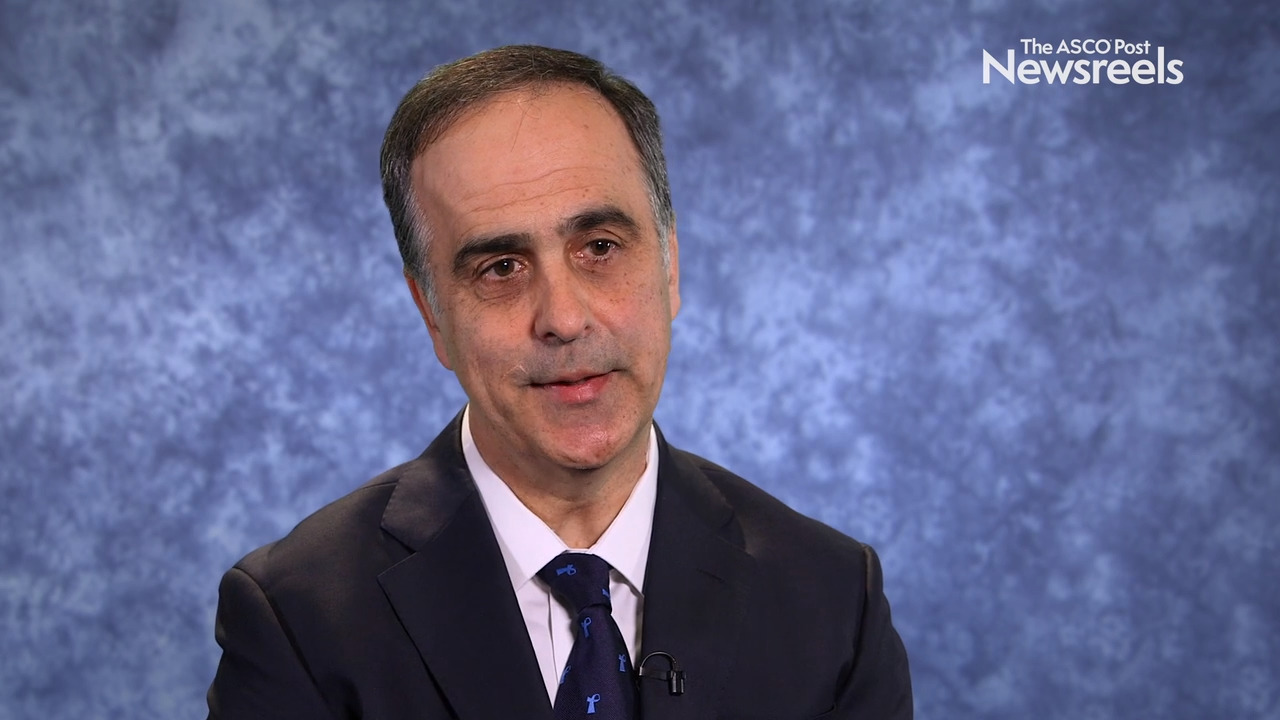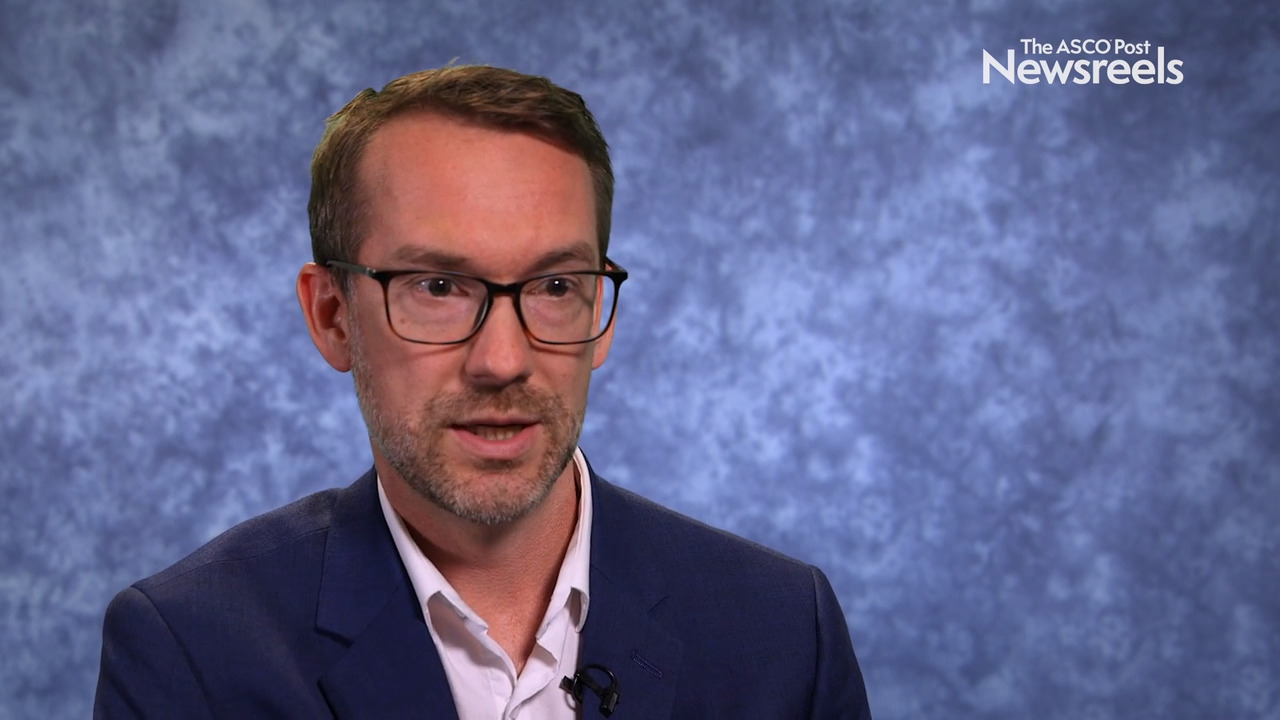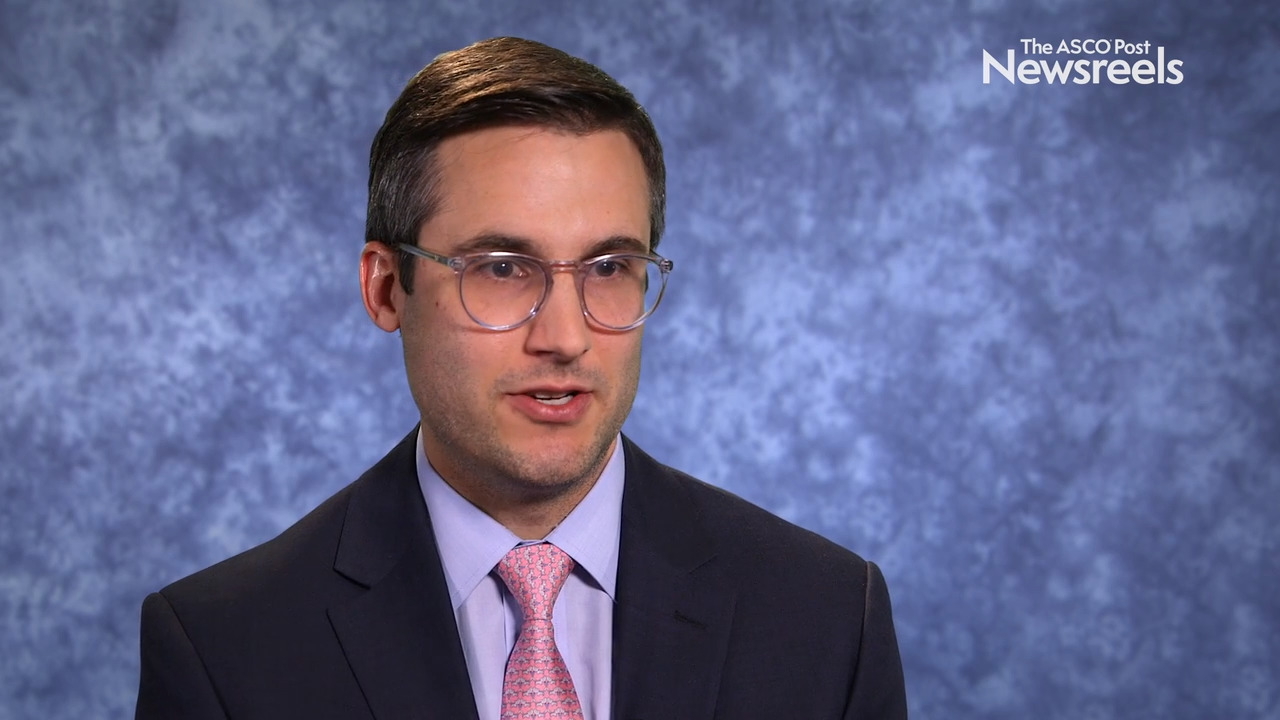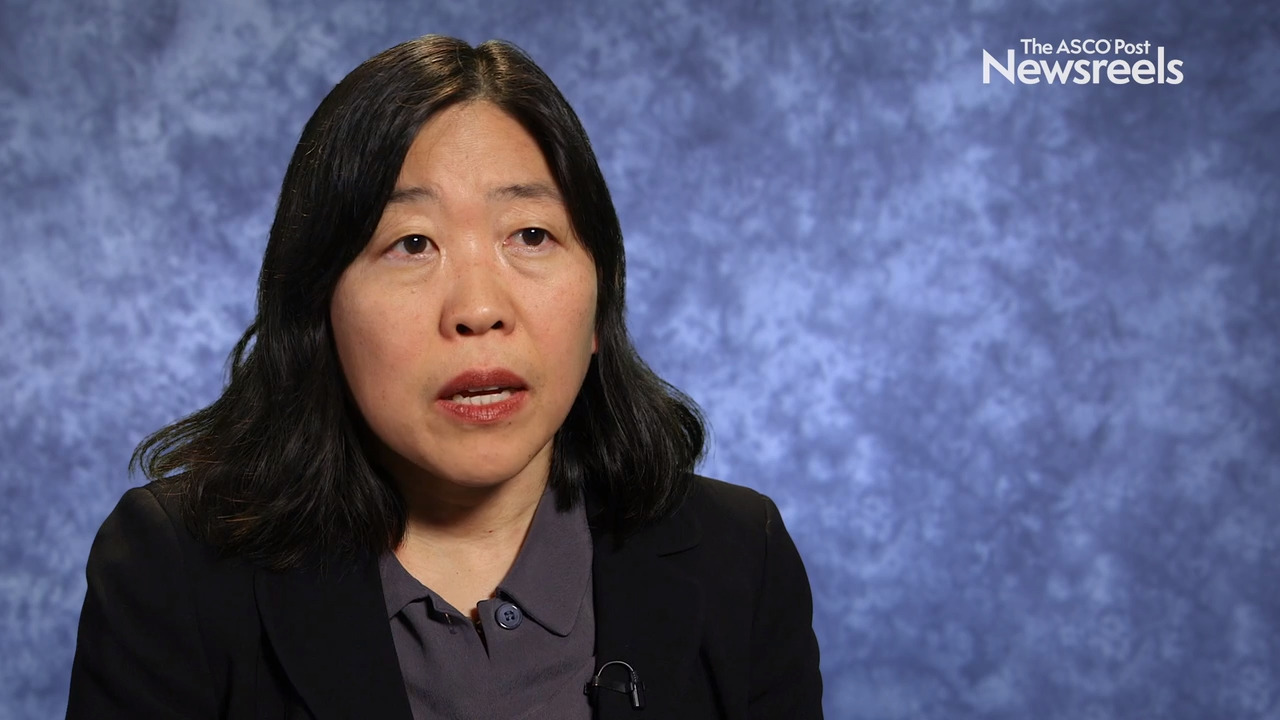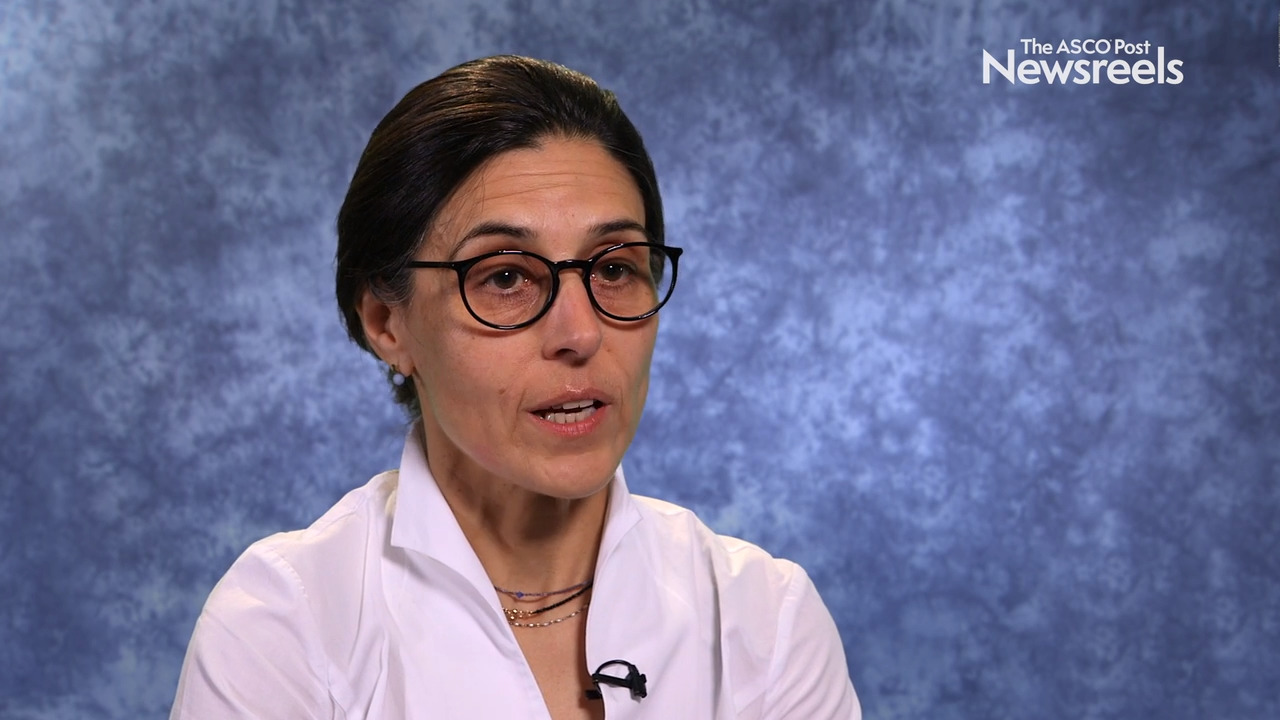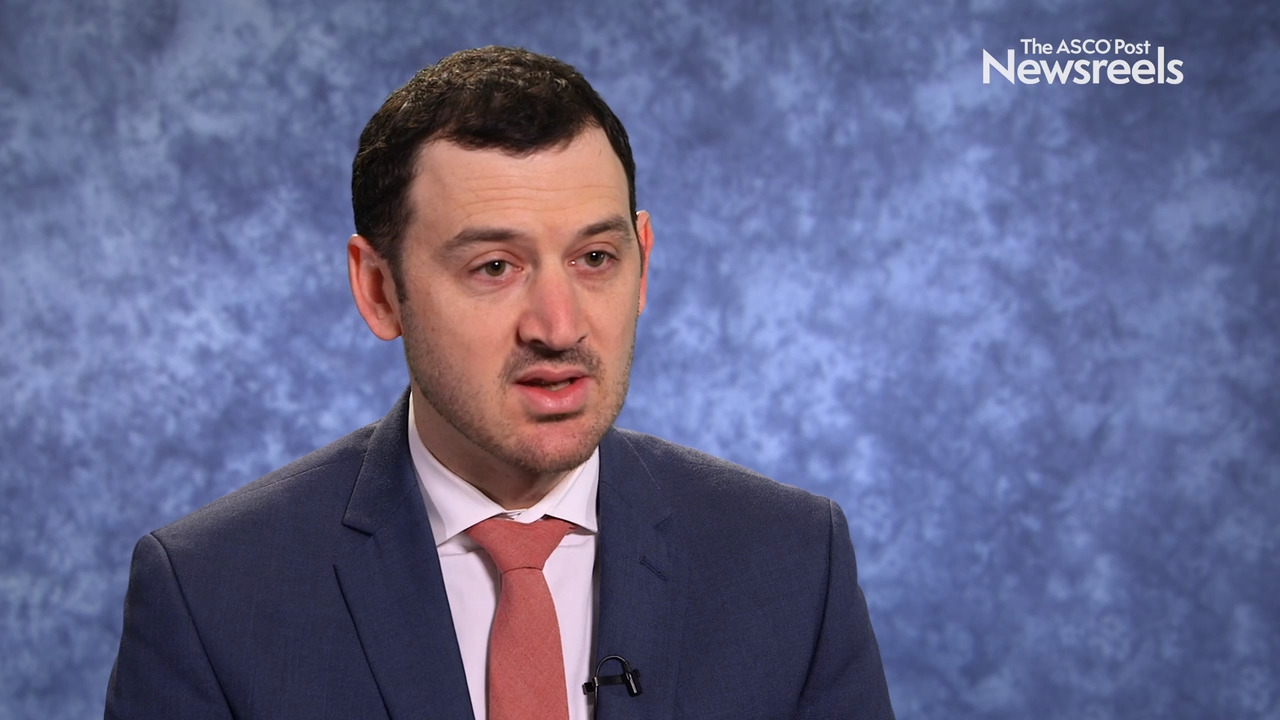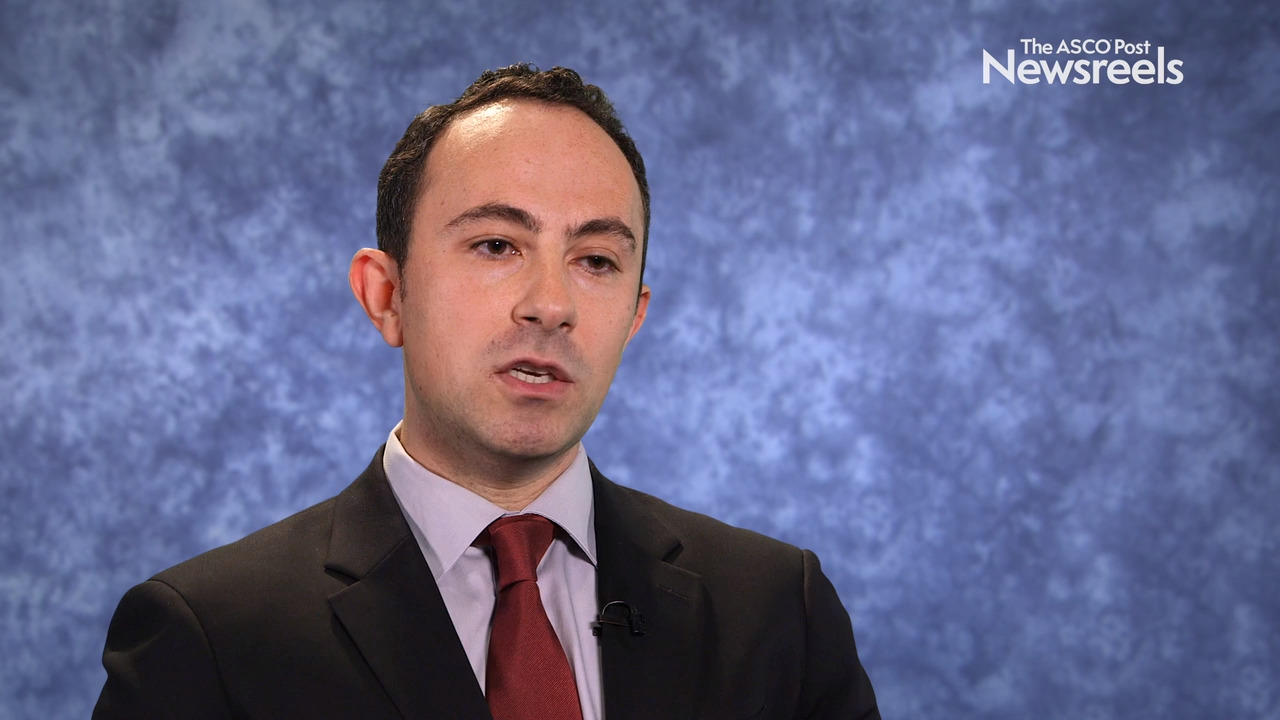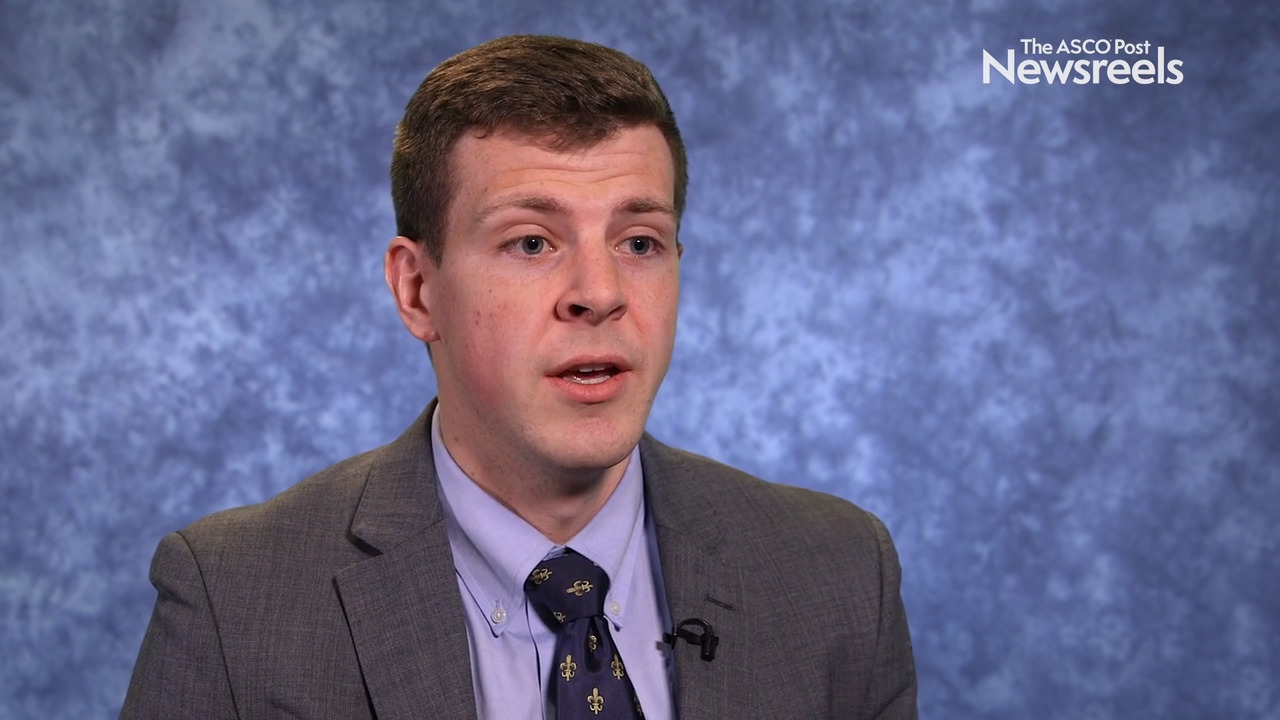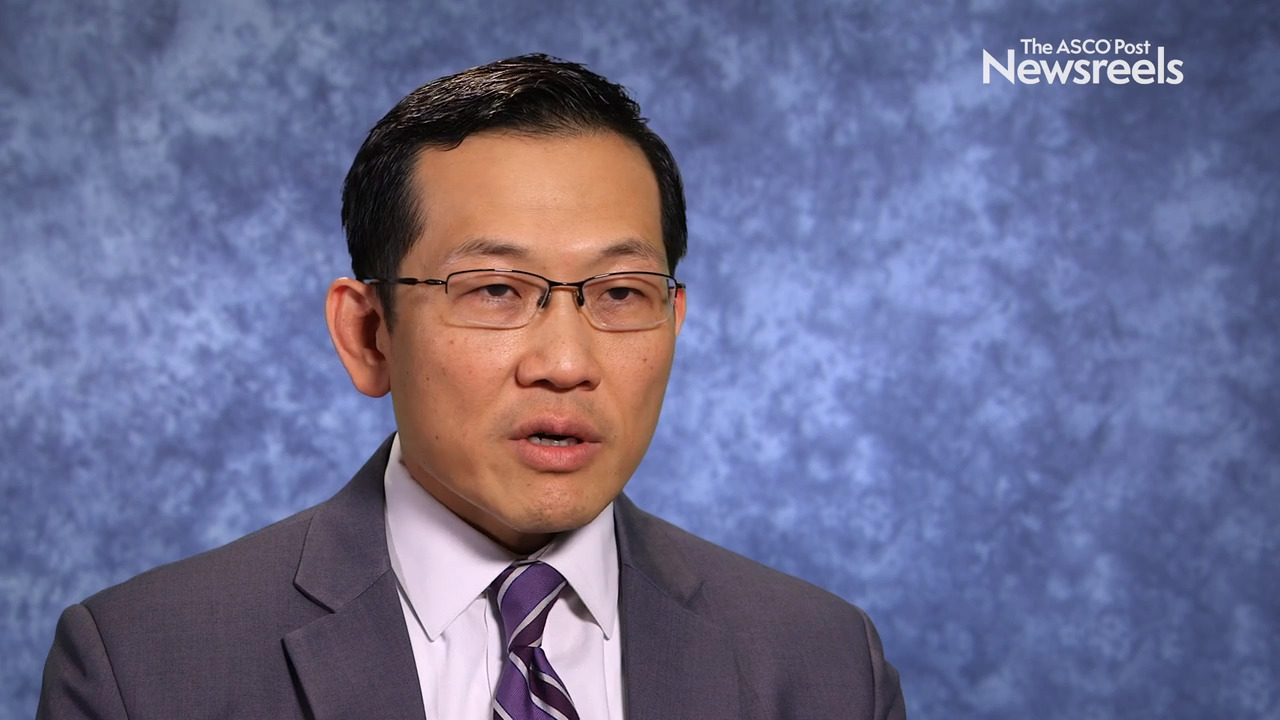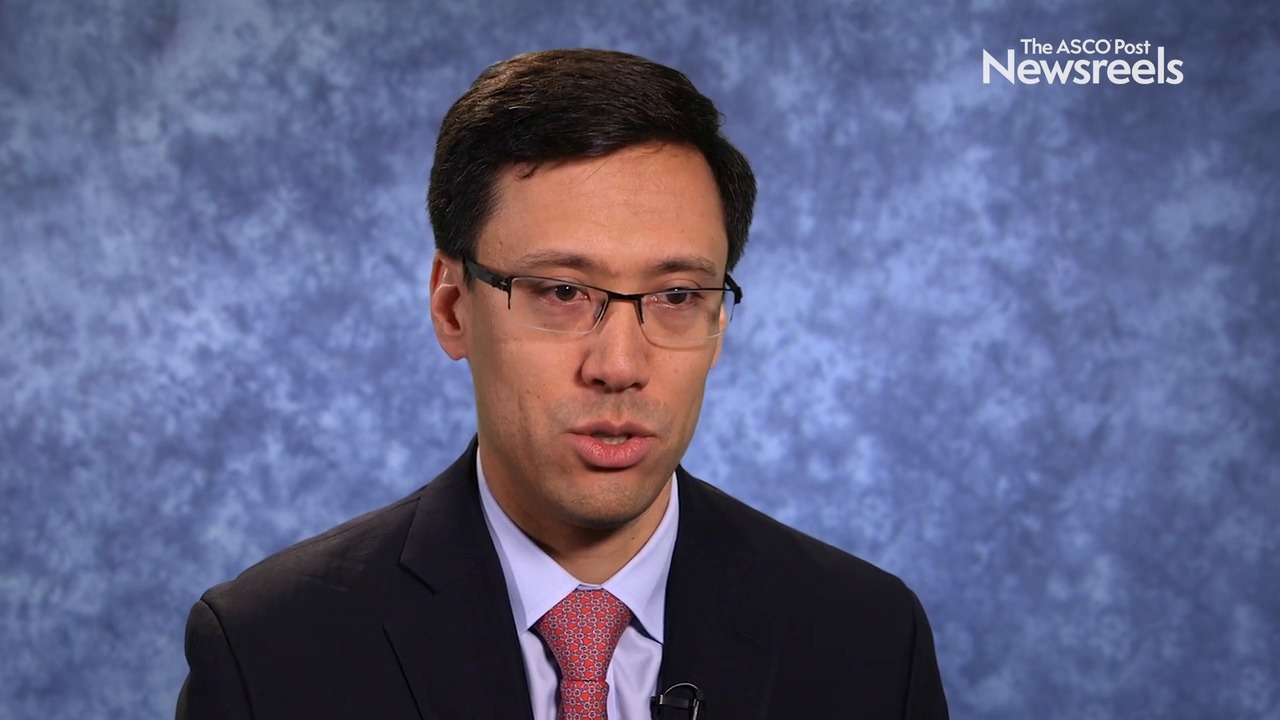2019 ASTRO Annual Meeting
Scientific Session on Breast Cancer Explores Studies on Partial-Breast Irradiation, Chemoradiotherapy
Women with early-stage breast cancer treated with lumpectomy followed by radiation therapy rated the cosmetic results for whole-breast and partial-breast irradiation to be equivalent, according to a n...
Omitting Radiation From Treatment for Early-Stage Hodgkin Lymphoma Increases Risk of Recurrence
Two presentations at the American Society for Radiation Oncology (ASTRO) Annual Meeting offered more evidence that omitting radiation therapy leads to higher rates of recurrence for patients with earl...
Role of Radiotherapy for Patients With Refractory Lymphoma Receiving CAR T-Cell Therapy
Although the role of radiotherapy in chimeric antigen receptor (CAR) T-cell therapy for lymphoma is still evolving, radiotherapy “would be an ideal bridging therapy” for patients with chemorefractory ...
Andrew Kneebone, MD, on an ANZUP Trial on Adjuvant vs Early Salvage Radiotherapy After Prostatectomy
Andrew Kneebone, MD, of Royal North Shore Hospital, discusses phase III study findings showing that at 5 years, biochemical control was similar between adjuvant and early salvage radiotherapies, the l...
Robert Olson, MD, on Quality-of-Life Outcomes After Stereotactic Ablative Radiotherapy vs Standard-of-Care Palliative Treatments
Robert Olson, MD, of the BC Cancer Centre for the North, discusses a secondary analysis of the SABR-COMET trial, which showed there was a small magnitude decline in quality of life in both arms of the...
Erica H. Bell, PhD, on Low-Grade Gliomas: Subgroup Analysis of the NRG Oncology/RTOG 9802 Trial
Erica H. Bell, PhD, of The Ohio State University, discusses phase III findings from a prognostic and predictive molecular subgroup analysis of radiotherapy vs radiotherapy plus procarbazine/lomustine/...
Michael J. LaRiviere, MD, on Non-Hodgkin Lymphoma: Induction Radiation Before CAR T-Cell Therapy for Resistant Disease
Michael J. LaRiviere, MD, of the University of Pennsylvania, discusses the safety and efficacy of an alternate radiation-based approach to using cytotoxic chemotherapy alone in preparation for CAR T-c...
Sue Sun Yom, MD, PhD, on Oropharyngeal Cancer: Deintensifying Radiation Therapy Plus Chemotherapy
Sue Sun Yom, MD, PhD, of the University of California, San Francisco, discusses phase II results showing that swallowing-related quality of life after deintensified chemoradiation therapy may improve ...
Alejandra Méndez Romero, MD, PhD, on Liver Metastases: Dutch-Belgian Registry of Stereotactic Body Radiation
Alejandra Méndez Romero, MD, PhD, of Erasmus University Medical Center, discusses findings that show high local control rates with stereotactic body radiation for patients in this large published seri...
David Routman, MD, on Oropharyngeal Squamous Cell Carcinoma and HPV Circulating Tumor DNA
David Routman, MD, of the Mayo Clinic, discusses his study findings showing that detectable human papillomavirus circulating tumor DNA in the postoperative setting may be linked to disease progression...
Daniel M. Trifiletti, MD, on Optimizing Whole-Brain Radiotherapy Dose and Fractionation for Patients With Brain Metastases
Daniel M. Trifiletti, MD, of the Mayo Clinic, discusses study findings showing that, between two different radiation doses (30 Gy/10 fractions vs 37.5 Gy/15 fractions), there was no difference in the ...
Youssef Zeidan, MD, PhD, on HER2-Positive Breast Cancer: HERA Trial on Postmastectomy Radiation Therapy
Youssef Zeidan, MD, PhD, of the American University of Beirut Medical Center, discusses study findings showing that, in patients with one to three positive lymph nodes, postmastectomy radiation treatm...
Ryan Phillips, MD, PhD, on Oligometastatic Prostate Cancer: ORIOLE Trial on Observation vs Stereotactic Ablative Radiation
Ryan Phillips, MD, PhD, of Johns Hopkins Medical Institutions, discusses phase II findings suggesting that treatment with stereotactic ablative radiation significantly decreased the risk of disease pr...
Justin Barnes, MS, on the Affordable Care Act and Risk of Suicide in Patients With Cancer
Justin Barnes, MS, of the St. Louis University School of Medicine, discusses his findings on the risk of suicide, which is higher in patients with cancer than in other adults but can be reduced by hea...
Steven H. Lin, MD, PhD, on Esophageal Cancer: Proton Beam vs Intensity-Modulated Radiation Therapy
Steven H. Lin, MD, PhD, of The University of Texas MD Anderson Cancer Center, discusses phase II findings that showed proton beam therapy improved total toxicity burden score with no difference in pro...
Daniel E. Spratt, MD, on the Impact of Antiandrogen Treatment in Prostate Cancer: NRG Oncology/RTOG 9601 Trial
Daniel E. Spratt, MD, of the University of Michigan, discusses phase III study findings showing that 2 years of antiandrogen therapy increased cardiac and neurologic toxicities, as well as mortality f...
Andreas Rimner, MD, on the PACIFIC Trial: Durvalumab for Stage III NSCLC
Andreas Rimner, MD, of Memorial Sloan Kettering Cancer Center, discusses study findings showing that, for patients with stage III non–small cell lung cancer, durvalumab reduced the rate of and time to...
ASTRO 2019: Patterns of Disease Progression in Patients With Unresectable Stage III NSCLC: Analysis of the PACIFIC Trial
Andreas Rimner, MD, of Memorial Sloan Kettering Cancer Center, presented an update of the landmark PACIFIC trial at the 61st Annual Meeting of the American Society for Radiation Oncology (ASTRO) (Abst...
ASTRO 2019: Long-Term Hormone Therapy May Increase Other-Cause Mortality in Men With Prostate Cancer Receiving Early Salvage Radiotherapy
Findings from the randomized phase III NRG Oncology/RTOG 9601 trial were initially reported in 2017, and showed that the addition of 2 years of antiandrogen therapy to postsurgical radiation treatment...
ASTRO 2019: Machine-Learning Model May Accurately Predict Radiation Side Effects in Patients With Head and Neck Cancers
A study by Reddy et al investigating the use of a machine-learning model to predict which patients with head and neck cancer being treated with radiation may experience significant weight loss, feedin...
ASTRO 2019: Effect of Closure of Women’s Health Clinics From 2010 to 2013 on Cervical Cancer Screening and Detection
Following the closure of nearly 100 women’s health clinics across the United States from 2010 to 2013, fewer women were screened for cervical cancer; more women were diagnosed with advanced stages of ...
ASTRO 2019: SBRT After Disease Progression on Immunotherapy Increases PFS in Patients With Metastatic NSCLC
Non–small cell lung cancer (NSCLC) accounts for the vast majority of all lung cancers—between 80% and 85% of those diagnosed in the United States—and is among the most deadly cancers for both men and ...
ASTRO 2019: ORIOLE Trial: Observation vs SABR for Oligometastatic Prostate Cancer
The randomized, phase II ORIOLE trial studying the efficacy of targeted high-dose radiation for men with oligometastatic prostate cancer has shown that stereotactic ablative radiation (SABR) is an eff...
